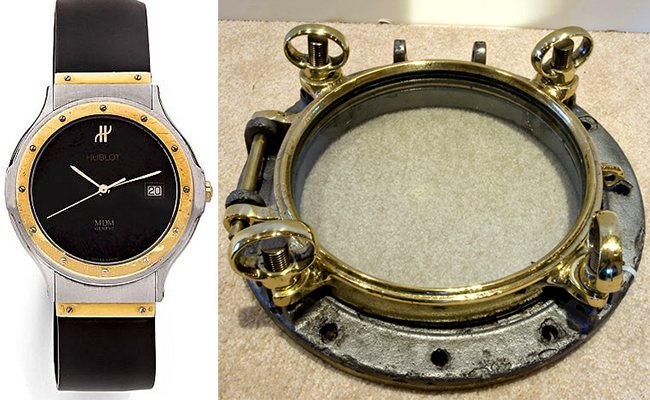Hublot: A Brief Brand History
Hublot was founded in 1980, making it the comparative newcomer in the watchmaking industry where centuries-old legacies are the norm. But since its inception, Hublot has exploded in the industry, earning its stripes with unprecedented design techniques and revolutionary materials.

Breaking From Tradition
Born in 1944, Italian watchmaker Carlo Crocco was the heir apparent for his uncle’s company, the Binda Group, a widely respected and decorated dynasty that specialized in crafting Breil watches. But in 1976, at only 32 years old, Crocco defied family tradition and boldly struck out on his own.
Crocco determinedly set about realizing his vision for a watch design unlike any he or his family had produced before. Over the next four years, Crocco raised $4 million (some of which was his personal wealth) to build a modest watch factory in Switzerland, the uncontested epicenter of watch manufacturing. And in 1980, Crocco opened MDM Geneva and introduced his Hublot watch at the prominent Baselworld watch fair.
Hublot’s Basel Introduction
The Hublot caused a sensation at Basel. Eschewing the usual gold, leather and exotic materials that were typical of a luxury watch band, Hublot’s band was made of rubber—more specifically a tempered, lightweight and durable rubber that Crocco had sunk an estimated $1 million into developing. The result was an elegant watch with a sporty flair, one that effortlessly straddled high-end design and casual everyday wear. The Hublot was a breakthrough in the luxury watch space but, on the commercial side, watch buyers were slow to buy into the Hublot’s then-radical design.
Customers’ Lukewarm Reaction
Throughout the 1980s, Crocco’s sales team had to campaign aggressively for shoppers to invest in a Hublot. Competing against incredibly well respected and long established brands, Hublot’s name recognition would slowly build (first across Europe and then in the United States) through the ‘90s. It was also a paradigm shift for some customers who had to under that the Hublot’s high price tag was because of the watch’s complicated design—not the unconventional rubber strap. Ultimately the uphill sales battle was won and by 1993 Hublot watches were a recognized favorite among celebrities including Prince Albert of Monaco, Giorgio Armani, Elton John and Candice Bergen.
Hublot’s Popularity Today
In 2004, with Hublot’s popularity waning, Jean-Clade Biver took the helm as CEO for Hublot. Biver left his post as president for Swatch Group’s Omega division and immediately shook up the Hublot collection with the introduction of the “Big Bang” Chronograph at Basel in April 2005. Like the original Hublot, the Big Bang thrilled Basel-goers—some who balked at the outlandish color-ways and others who were delighted in the refreshing break from staid traditionalist designs. The oversized watch was a major boon for sales and received numerous awards and accolades, including the prestigious Design Prize at the Geneva Watchmaking Grand Prix.
Hublot has firmly rooted itself as a recognized player in the watch industry and one who is comfortable defying conventionality and industry norms and embraces spirited and groundbreaking designs.

The Hublot Big Bang Watch
Photo Credit: hublot.com







